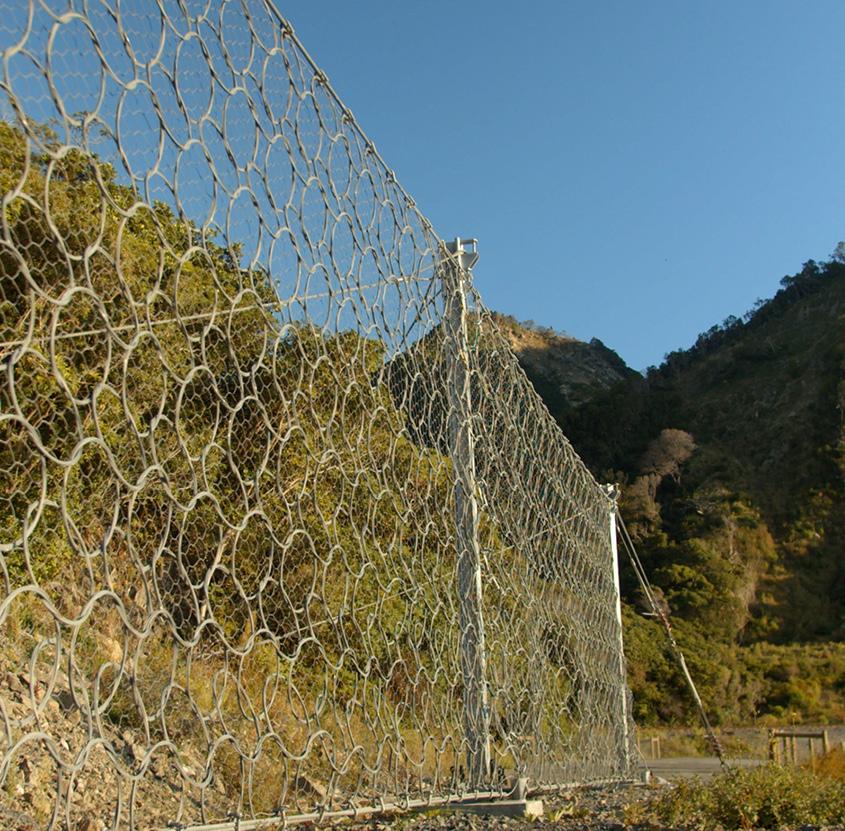PROJECT DESCRIPTION
In 2016 Kaikoura, a coastal town on New Zealand’s South Island, was badly affected after a magnitude 7.8(Mw) earthquake caused landslides and rock falls along the coastal road of the state highway.
After the earthquake, the government formed the North Canterbury Transport Infrastructure Recovery (NCTIR) to bring together the New Zealand Transport Agency (NZTA), Kiwirail, major contractors, and engineering consultants.
NCTIR was tasked with restoring the transport infrastructure networks within given time frame to the pre-earthquakes condition.
CHALLENGES
The scale and complexity of the slope damage at Ohau Point, together with the tight time frame to re-open the state highway to public, lead the NCTIR team to adopt multiple approaches to the problem.
Depending on the condition of the multiple sites along the highway, various solutions of differing rock fall protection structures and energy capacities were considered for the coastal road.
Multiple strategies had to be conceptualised to minimise the rock fall risks including:
- Extensively treating the upper slope by sluicing and scaling to remove loose surface debris
- Meshing over the surface of the northern end of the slope
- Re-purposing the old road to become a catch bench with a GTM rock fall protection bund at the northern end
- Re-aligning the highway further out into the sea by constructing a MSE sea wall
After observing multiple storms while the upslope works were in progress, it was decided that a rock fall fence was required to catch material that could bypass the catch bench and bund if it became overwhelmed in extreme events.
A Maccaferri RMC200A (MEL>2000kJ) (ETAG27 certified) rock fall protection fence was determined to be the best option for the road shoulder beside the toe of the slope for a site at Ohau Point.
This fence forms part of the hazard mitigation works as the last line of defence structure to intercept any falling rocks.
OUR SOLUTION
Geofabrics supplied the RMC200A (MEL>2000kJ) Maccaferri fence system. The fence is flexible, allowing it to handle geometric alignment issues. Due to the modular nature of the fence, repair and maintenance works can be contained to a shorter fence length.
The total length installed was over 600m in total with a post height of 4.0m. The installation timeframe took place over 4.5 months.
The fences were installed with intermediate posts at every 50m section with lateral anchors at both sides of the intermediate post. This allows the fence to be repaired and maintained within a shorter span after extreme rock fall impact events.
Approximately one year after the completion of the fence installation, it was impacted by multiple rock falls after severe weather in Kaikoura. The largest boulder size was observed to be >1m in diameter with an estimated bounce height on the intercepting panel between 1.5m to 2.0m. All rocks were successfully stopped by the fence, and only minor repair to the secondary DT mesh was required for the fence to be fit for purpose again to protect the road network.
The collaboration among Geofabrics, Maccaferri and the NCTIR design and delivery team made this project a success.The collaboration among Geofabrics, Maccaferri and the NCTIR design and delivery team made this project a success.
PRODUCTS USED
Maccaferri® Dynamic Rockfall Barrier
- Fabricated from a complex system of steel cables, connections of steel cables to structural elements, energy absorbing devices and anchorages
- Capable of high deformation capacities which are designed to be easily transported and assembled in extreme conditions
Maccaferri® Flexible Anchor Head TF 280
- A flexible head for self-drilling anchors type 32-280
- Used in rockfall protection works whenever the direction of the pull-out forces is variable or inclined to the axes of the anchor
- Made from spiral steel wire rope, zinc coated to Class A in accordance with EN 10244-2









